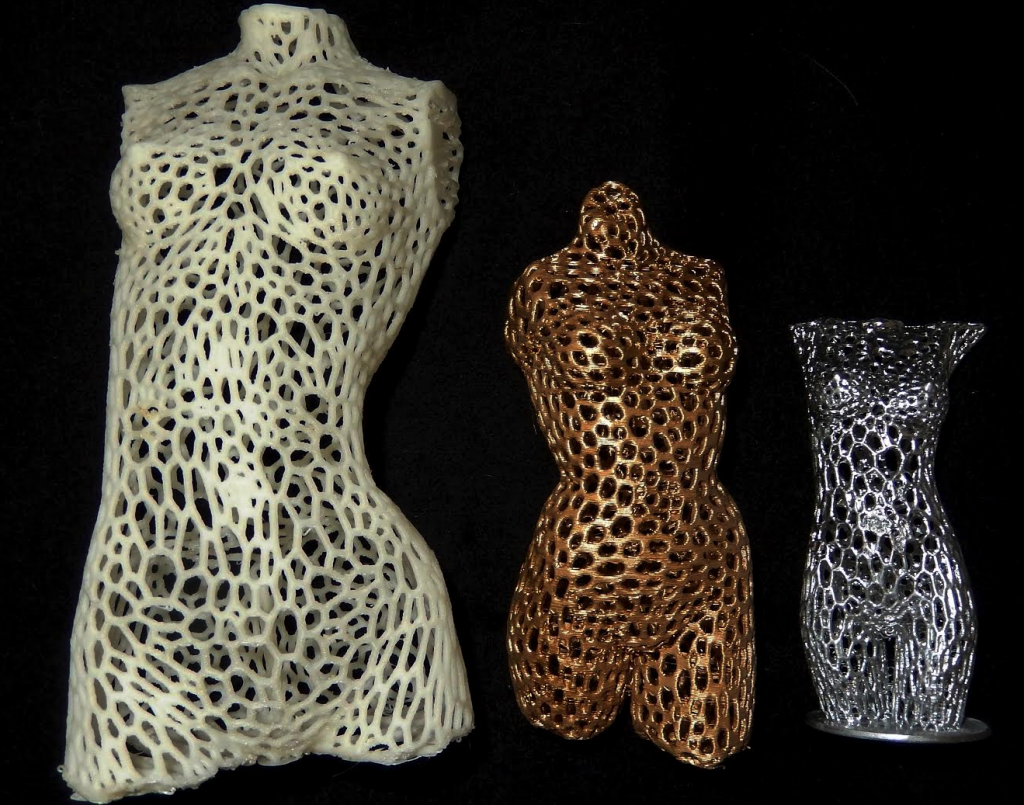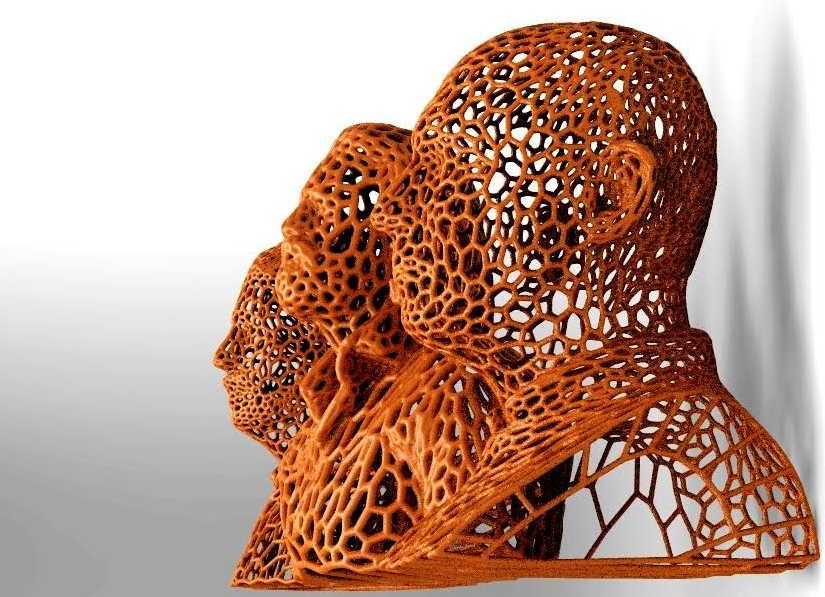 Because of the fact that 3D printing is a computer controlled fabrication method, the technology lends itself to being utilized for creating algorithm- based designs that would have been impossible to create prior to the existence of computers. Eventually designers, engineers, and mathematicians will come up with products that allow for better efficiency, weight bearing properties, and revolutionary mechanics, thanks to the use of computer generated design and 3D printing technology.
Because of the fact that 3D printing is a computer controlled fabrication method, the technology lends itself to being utilized for creating algorithm- based designs that would have been impossible to create prior to the existence of computers. Eventually designers, engineers, and mathematicians will come up with products that allow for better efficiency, weight bearing properties, and revolutionary mechanics, thanks to the use of computer generated design and 3D printing technology.
 For the past year or two, we have gradually begun to see various algorithms used in the design of 3D printable files. One such example would be the influx of Voronoi-style patterns, which provide for quite an interesting look. In math, Voronoi diagrams are a partitioning of a plane into separate regions, based on the distance to points in a specific subset of the plane. In 3D printing, Voronoi designs utilize this same formula to create quick printing, hollowed, strong structures which are aesthetically pleasing as well.
For the past year or two, we have gradually begun to see various algorithms used in the design of 3D printable files. One such example would be the influx of Voronoi-style patterns, which provide for quite an interesting look. In math, Voronoi diagrams are a partitioning of a plane into separate regions, based on the distance to points in a specific subset of the plane. In 3D printing, Voronoi designs utilize this same formula to create quick printing, hollowed, strong structures which are aesthetically pleasing as well.
For one company, called 3D-ZAKAZ, they’ve taken 3D printing and modeling of Voronoi style designs to a whole new level, by releasing dozens of designs files for these interesting creations.
“The lattice structure of the surface makes people look at the world from a different perspective, giving the illusion of penetration into the essence of the image,” the company tells 3DPrint.com. “Sir Winston Churchill and Che Guevara, Nefertiti, and Schwarzenegger, Sphinx and Mickey Mouse, Hulk and Pegasus, Cleopatra and Minion, Dragon and Bruce Willis – heroes of all time, lit thoroughly allowing a glimpse into their inner world.”
Geroge Voronoi, for whom these patterns are named, was a Russian mathematician who made several important discoveries in the geometry of numbers and polygons. Certainly he would have never imagined that his patterns would be used for 3D printing.
At this moment, 3D-ZAKAZ has over 60 different models in the Voronoi style, with the design files being disseminated on 3D printing repositories such as Thingiverse, MyMiniFactory, and their own website. Printing of the designs can be quite challenging, as the ability to print without support material opens up the designs for glitches within prints.
3D-ZAKAZ uses a Picaso Designer PRO 250 to print their designs, ensuring the infill density is set to 100%. Their most popular designs so far have been their Incredible Hulk, dragon, female body, and various minions. You can see their entire library of Voronoi designs on their Thingiverse profile.
What do you think this slew of 3D printable designs? Have you 3D printed any yourself? Discuss in the 3D Printable Voronoi Designs forum thread on 3DPB.com.
Subscribe to Our Email Newsletter
Stay up-to-date on all the latest news from the 3D printing industry and receive information and offers from third party vendors.
Print Services
Upload your 3D Models and get them printed quickly and efficiently.
You May Also Like
3D Printing News Briefs, August 27, 2025: Executives, Microelectronic Cooling, & More
We’ll focus on business in today’s 3D Printing News Briefs, starting with 3D Systems’ new Chief Financial Officer and the expansions to Carbon’s global leadership team. Titomic sold a D623...
3D Printing Makes Inhalers for Asthma More Effective
For more than 260 million people worldwide with asthma, inhalers are essential. However, studies show incorrect use in 12–71% of cases, up to 86% for hospitalized patients, and as high...
3D Printing News Briefs, August 20, 2025: Tool Steel Alloy, Microstructure Control, & More
Today’s 3D Printing News Briefs is all about materials, from recycled metal replacements and a new high-strength alloy to microstructure control in nickel-based superalloys and more. Read on for all...
3D Printing News Briefs, August 16, 2025: European Distribution, Expeditionary Powder, & More
We’re taking care of business first today in 3D Printing News Briefs, with Wayland Additive appointing a new Chief Technology Officer and AML3D expanding its European distribution. Moving on, Metal...
































